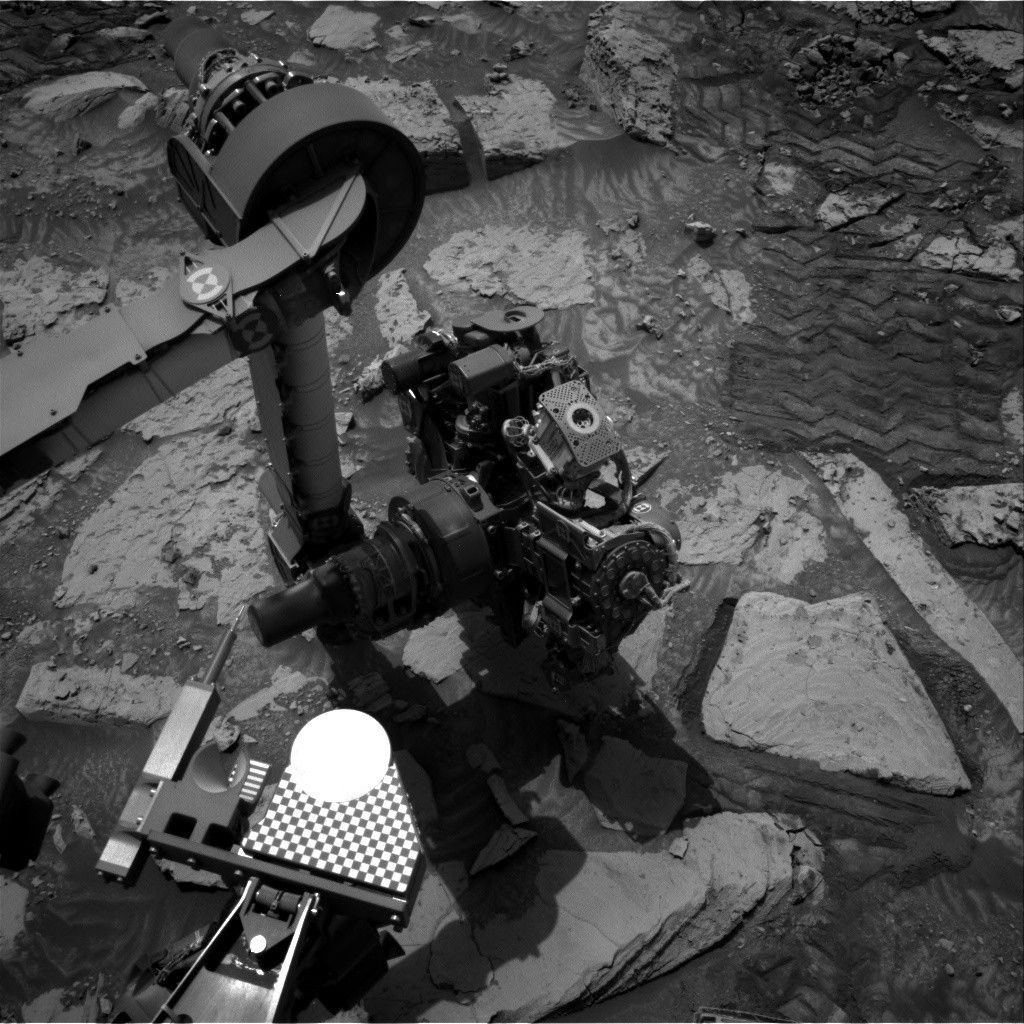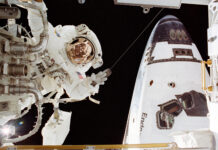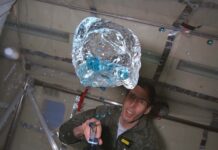Curiosity Rover’s Latest Mission: A Collaborative Journey on Sols 4350-4351
The Curiosity Rover, a key player in NASA’s Mars Science Laboratory mission, continues to explore the Martian surface with its unique set of behaviors and challenges. As with any complex machine, Curiosity has its quirks—behaviors that the team back on Earth understands well, even if they occasionally throw a wrench into the planned schedule. Recently, during the mission’s Sols 4350-4351, the rover exhibited one of these quirks, prompting a collaborative team response to ensure the mission’s objectives are met.
On October 29, 2024, during Martian day 4,348, the rover’s Right Navigation Camera captured an image that provides a glimpse into the Martian terrain. This grayscale image showcases the medium gray Martian soil dotted with lighter flat rocks, with visible rover wheel tracks—a testament to the rover’s ongoing journey across the Red Planet. Such images are not only visually striking but also scientifically valuable, offering insights into Mars’ geological history.
Understanding Curiosity’s Quirks
The Earth planning date for these activities was October 30, 2024. On this day, the Curiosity team faced an unexpected challenge: the rover’s arm remained down on the Martian ground, halting the completion of planned activities. These activities included essential contact science, remote sensing, and a scheduled drive.
When such anomalies occur, the entire team collaborates to analyze the data sent back by Curiosity. This team effort is crucial in understanding why the rover behaved unexpectedly and ensuring that it is safe to proceed with the mission. While these interruptions are not ideal for maintaining the planned scientific schedule, they serve as a reminder of the expertise and dedication of the team monitoring Curiosity’s health and safety daily.
Resuming Scientific Endeavors
In response to the unexpected behavior, the team focused on completing the contact science observations initially planned. Two specific bedrock targets, "Reds Meadow" and "Ladder Lake," were chosen for detailed analysis. The rover uses tools like the APXS (Alpha Particle X-Ray Spectrometer) and MAHLI (Mars Hand Lens Imager) to study these targets, helping scientists understand the changes in bedrock composition and morphology in this area.
Additionally, the remote sensing observations that were not executed earlier were repeated. Remote sensing involves collecting data from a distance, using instruments like cameras and spectrometers to gather information about the Martian surface and atmosphere without direct contact.
Navigating Forward
With fresh insights from the Rover Planning team, the drive initially planned was reassessed and confirmed as the best course of action. This drive is crucial for making significant progress toward the next imaging waypoint, where Curiosity will capture more valuable data about the Martian landscape.
The day’s plan also included routine atmospheric measurements. These measurements are an integral part of understanding Mars’ climate and weather patterns, providing data that could be vital for future human exploration.
Reflecting on the Team’s Efforts
These moments, where the team must pivot and adapt to the rover’s unique behaviors, highlight the collective expertise and resilience of the Curiosity mission team. Each team member plays a vital role in ensuring the mission’s success, from analyzing data to planning the rover’s next moves.
Looking Ahead
As the team concludes the activities for these sols, they eagerly anticipate what the next planning phase will bring. The rover’s mission is ongoing, and each day offers new opportunities for discovery and learning.
Good to Know: The Science Behind Mars Exploration
Curiosity’s mission is part of a broader effort to explore Mars and understand its geology, climate, and potential to support life. NASA’s Mars Exploration Program seeks to uncover the planet’s past and present conditions, using a fleet of rovers, orbiters, and landers. Curiosity itself is equipped with a suite of scientific instruments designed to analyze soil, rocks, and the atmosphere, contributing to our growing understanding of the Red Planet.
Community Reactions and References
The scientific community and space enthusiasts worldwide follow Curiosity’s journey with great interest. Each update from the mission offers new insights and fuels discussions about Mars exploration and the potential for future missions.
For those interested in delving deeper into the Curiosity mission and related Mars exploration efforts, the following resources provide valuable information:
- Curiosity Mission Overview
- Current Location of Curiosity
- Mars Exploration Program
These resources offer a wealth of information, from mission updates and scientific findings to multimedia content that brings the Mars exploration journey to life.
Conclusion
As Curiosity continues its mission on Mars, it remains a symbol of human ingenuity and curiosity. The challenges faced and overcome by the mission team underscore the complexity and excitement of space exploration. Each sol on Mars brings new possibilities and discoveries, furthering our understanding of the Red Planet and paving the way for future exploration endeavors.
For more Information, Refer to this article.


































